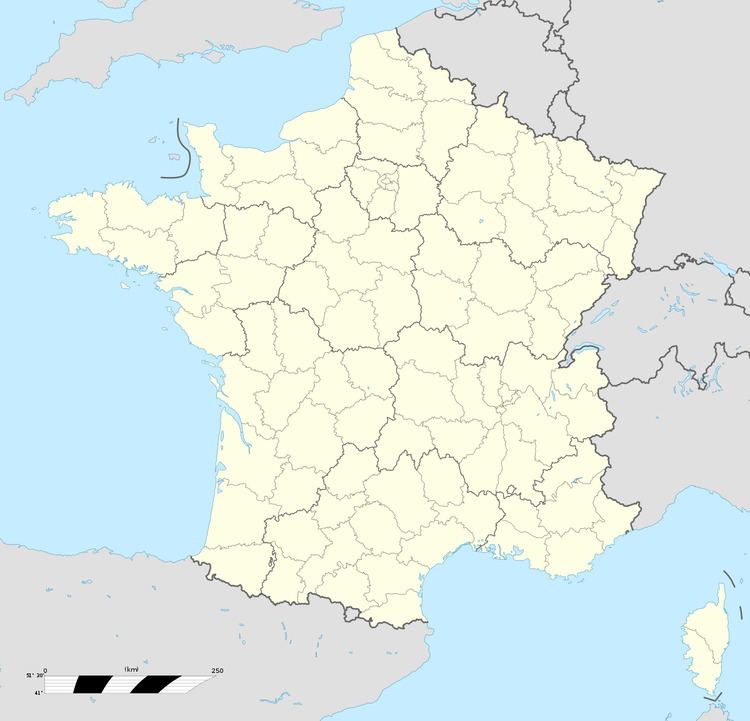Country France Department Somme Canton Acheux-en-Amiénois Area 7.24 km² | Region Hauts-de-France Arrondissement Amiens Intercommunality Pays du Coquelicot Local time Saturday 1:16 PM | |
 | ||
Weather 13°C, Wind SW at 14 km/h, 70% Humidity | ||
Varennes-en-Croix is a commune in the Somme department in Hauts-de-France in northern France.
Contents
- Map of 80560 Varennes France
- Geography
- Middle Ages
- Charles the Bold
- The Thirty Years War and the tunnels of Varennes
- War of 1870
- First World War
- Places of interest
- References
Map of 80560 Varennes, France
Geography
Varennes is situated 15 miles (24 km) northeast of Amiens, at the junction of the D47, D447 and D179, in the form of a cross.
Middle Ages
The settlement of Franc-Mailly was located at the site of the present-day cemetery of Varennes, where the seigneurs made their home, with a farm and a mill. Wishing to promote the culture of their region, land was granted to the people to build homes, free from any kind of duties and taxes. Over time the village of Franc-Mailly became a popular haunt for criminals. According to tradition, in 1069 the four corners of the village of Franc-Mailly were burnt down on the orders of the Seigneur. The remaining core of the village, grouped around the manor house, became Varennes.
Florent de Varennes, lord of Varennes, son-in-law of John II, Count of Soissons, became the first Admiral of France, heading the naval journey to North Africa, where Saint Louis IX led the Eighth Crusade. Like the King and Prince John Tristan of France, Count of Valois, he died in front of Tunis in August 1270, due to dysentery. His coat of arms "Gules a Cross Or" (Red with a gold cross) is still the coat of arms of the village.
Charles the Bold
In 1472, Charles the Bold invaded Picardy in retaliation against Louis XI who had refused to ratify the treaty on October 3, 1471 in which Charles claimed possession of Amiens, Saint-Quentin and the Vimeu. Many villages were burnt down, including that of Varennes, which was rebuilt with its streets in the shape of a cross".
The Thirty Years' War and the tunnels of Varennes
During the Thirty Years War, Varennes suffered looting and destruction by Spanish troops, as testified by a verbatim record of 1636, in which it says that the village was burned down in September 1635.
In order to protect themselves from armed troops, the inhabitants of Varennes dug a large tunnel. The underpass beneath the town square and the church is made up of a gallery 39m long with 29 rooms, all of which were fitted with wooden doors. Eight of the rooms had wells for fresh water.
In the most recent excavations in 1970, various inscriptions were noted on the walls: "1636 Adrien Lefebvre"; “1660 Guillomin Ringard”; “Antonin Goubet in the year 1677"; they also found a coin dated 1656.
Having served as an underground refuge for the population, the tunnels were probably used as a workplace in the winter. They were eventually closed because of the danger of collapse.
War of 1870
In September 1870, during the Franco-Prussian War, Varennes was occupied by the Germans for three or four days, the village was subjected to theft, damage to housing and they had to feed the enemy troops and horses. The village was also forced to pay war reparations to the tune of 4122 Francs.
First World War
In 1916, the front line between the French and German forces was located about 7 kilometres (4 mi)from Varennes. Many underpasses were constructed and occupied in the surrounding villages, the tunnels of Varennes was occupied until Easter 1918 by British troops. In the tunnels, there’s an inscription “J. Connoly, Smith, Baker Sgt, 1918”.
